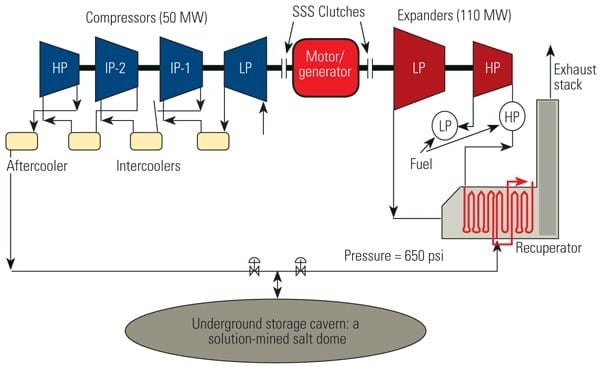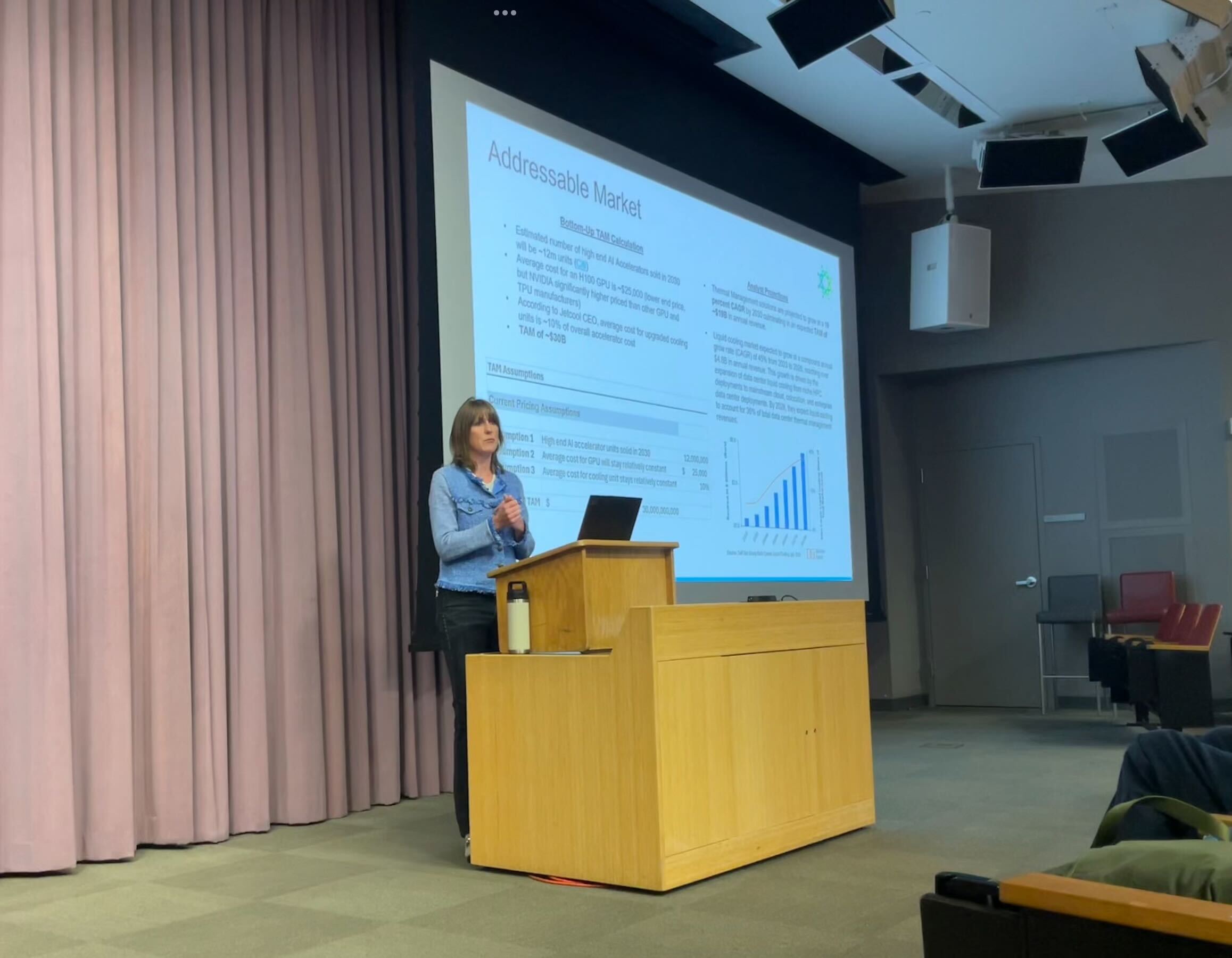LOCATE Finger Lakes Energy Infrastructure Summit Line-up Announced – Finger Lakes Daily News

Report on the LOCATE Finger Lakes Energy Infrastructure Summit
Executive Summary
A multi-stakeholder summit has been convened to address critical energy infrastructure deficits within the Finger Lakes region. The event, titled the LOCATE Finger Lakes Energy Infrastructure Summit, will analyze the profound impact of the current energy grid on regional economic development, job creation, and sustainable growth. The summit’s agenda is directly aligned with several United Nations Sustainable Development Goals (SDGs), primarily focusing on SDG 7 (Affordable and Clean Energy), SDG 8 (Decent Work and Economic Growth), SDG 9 (Industry, Innovation, and Infrastructure), and SDG 17 (Partnerships for the Goals). The objective is to formulate actionable strategies and policy recommendations to build resilient, sustainable, and modern energy infrastructure that supports inclusive economic prosperity for the region.
Summit Overview and Thematic Focus
Scheduled for Monday, December 1st, at the Scandling Center, Hobart and William Smith Colleges, the summit will bring together energy experts, economic developers, and policymakers. The central theme is the challenge posed by an aging and under-maintained electric grid, which hinders progress toward key sustainable development targets. Discussions will be structured into four distinct sessions, each addressing a critical component of the energy infrastructure challenge.
Key Thematic Sessions and Alignment with Sustainable Development Goals (SDGs)
1. Fostering Decent Work and Economic Growth (SDG 8)
This session will examine how limitations in energy infrastructure are impeding job creation and sustainable business growth, directly impacting the achievement of SDG 8. Regional economic leaders will discuss the barriers to inclusive and sustainable economic development.
- Moderator: Matt Horn, Strategic Growth & Business Development National Director, MRB Group
- Panelists:
- Laura Fox O’Sullivan, Finger Lakes Director, NY Empire State Development
- Matt Hurlbutt, CEO, Greater Rochester Enterprise
- Michael Miller, Director, Cayuga County IDA
- James Yockel, President, Greater Rochester Association of Realtors
2. Assessing Infrastructure for Industry and Innovation (SDG 9 & SDG 7)
A technical panel will provide a detailed assessment of the region’s electric grid. This analysis is fundamental to building resilient infrastructure (SDG 9) and ensuring access to reliable and modern energy (SDG 7). The discussion will identify specific technical constraints that hinder regional development and innovation.
- Moderator: Mike Davis, Business Manager, IBEW Local 840
- Panelists:
- Jim McKenna, Senior Vice President, LeChase Construction
- Michael Parkes, CEO, O’Connell Electric
- Bill Burns, Regional Director, EJ Electric Installation Company
- Dan Pollock, NECA NE Line Division Manager
- Mark Lawrence, Business Manager, IBEW Local 1249
3. Modernizing for Sustainable Energy and Communities (SDG 7 & SDG 11)
This session will focus on strategies for modernizing and upgrading the Finger Lakes energy grid. The objective is to advance the transition toward affordable, reliable, and sustainable energy systems (SDG 7) that are essential for developing sustainable cities and communities (SDG 11).
- Moderator: Mike Nozzolio, Chairman, LOCATE Finger Lakes
- Panelists:
- Joe Sayre, Manager—Economic Development, NYSEG and RG&E
- Donna DeCarolis, Senior Energy Policy Advisor
- Radmila Miletich, Legislative and Environmental Policy Director, IPPNY
- David Bottar, Director, Central NY Regional Planning and Development Board
4. Policy and Partnerships for the Goals (SDG 17)
The final panel will concentrate on the necessary state-level policy actions and multi-stakeholder partnerships (SDG 17) required to facilitate improvements in energy distribution. Bipartisan elected officials will discuss legislative frameworks to support a sustainable energy future.
- Moderator: Ryan Davis, Ontario County Economic Development Director
- Panelists:
- Senator Pam Helming
- Senator Tom O’Mara
- Assemblyman Phil Palmesano
- Assemblyman Jeff Gallahan
- Assemblyman Brian Manktelow
Strategic Outlook
The summit represents a critical step in addressing foundational energy issues that directly influence the region’s capacity for sustainable development. As stated by summit organizers, resolving these infrastructure challenges is imperative for the future economic vitality and sustainability of the Finger Lakes region. The outcomes are expected to provide a clear roadmap for policy action and investment, aligning regional growth with global sustainability targets.
1. Which SDGs are addressed or connected to the issues highlighted in the article?
-
SDG 7: Affordable and Clean Energy
- The article’s central theme is the challenge of an “aging and under-maintained electric grid” and the need to “modernize energy distribution.” This directly relates to ensuring access to reliable energy, a key component of SDG 7.
-
SDG 8: Decent Work and Economic Growth
- The summit explicitly aims to address how “energy infrastructure limitations are impeding job creation” and affecting “business growth.” The article emphasizes that the “economic future of the Finger Lakes region depends on achieving these solutions,” linking energy infrastructure directly to economic prosperity and job development.
-
SDG 9: Industry, Innovation, and Infrastructure
- This goal is directly addressed through the focus on “energy infrastructure,” the “technical constraints of the current grid,” and strategies for “modernizing and upgrading the Finger Lakes energy grid.” The article highlights the need for resilient and reliable infrastructure to support economic development and innovation in sectors like food production.
-
SDG 17: Partnerships for the Goals
- The summit itself is a multi-stakeholder partnership, bringing together “energy experts, economic developers, and policymakers,” as well as business leaders and elected officials from different parties. This collaboration is essential for developing coherent policies and actions, reflecting the spirit of SDG 17.
2. What specific targets under those SDGs can be identified based on the article’s content?
-
SDG 7: Affordable and Clean Energy
- Target 7.1: By 2030, ensure universal access to affordable, reliable and modern energy services. The article’s focus on the “aging and under-maintained electric grid” and its impact on the region points to a need to improve the reliability and modernity of energy services.
- Target 7.b: By 2030, expand infrastructure and upgrade technology for supplying modern and sustainable energy services for all. The panel discussion on “Modernizing and Upgrading the Grid” directly aligns with this target.
-
SDG 8: Decent Work and Economic Growth
- Target 8.2: Achieve higher levels of economic productivity through diversification, technological upgrading and innovation. The article notes that grid limitations affect “innovative food production systems” and overall “business growth,” implying that upgrading the energy infrastructure (a technological upgrade) is necessary for economic productivity.
- Target 8.3: Promote development-oriented policies that support productive activities, decent job creation, entrepreneurship, creativity and innovation. The summit’s goal to identify “necessary policy actions” to support the region’s economy and address how infrastructure is “impeding job creation” is a direct reflection of this target.
-
SDG 9: Industry, Innovation, and Infrastructure
- Target 9.1: Develop quality, reliable, sustainable and resilient infrastructure, including regional and transborder infrastructure, to support economic development and human well-being. The entire article is centered on the need to address the “infrastructure challenges” of the electric grid to support the “region’s economic future.”
- Target 9.4: By 2030, upgrade infrastructure and retrofit industries to make them sustainable. The panel on “Modernizing and Upgrading the Grid” is a clear effort towards achieving this target.
-
SDG 17: Partnerships for the Goals
- Target 17.14: Enhance policy coherence for sustainable development. The summit brings together policymakers, including “bipartisan elected officials,” to discuss “state-level actions needed to improve energy distribution,” which is an exercise in creating coherent policy.
- Target 17.17: Encourage and promote effective public, public-private and civil society partnerships. The summit’s diverse lineup, including government bodies (NY Empire State Development), public-private entities (County IDAs), private companies (LeChase Construction, O’Connell Electric), and industry associations (IBEW, IPPNY), exemplifies the formation of such a partnership.
3. Are there any indicators mentioned or implied in the article that can be used to measure progress towards the identified targets?
The article does not provide quantitative data but implies several qualitative and quantitative indicators that could be used to measure progress:
-
Indicators for SDG 7 and SDG 9 (Infrastructure Reliability)
- Implied Indicator: The quality and reliability of the electric grid. The article describes the grid as “aging and under-maintained,” which suggests that progress could be measured by tracking improvements in grid performance, such as reduced downtime, increased capacity to support new developments, and the mileage of upgraded transmission lines.
-
Indicators for SDG 8 (Economic Growth and Job Creation)
- Implied Indicator: Rate of job creation and business growth. The article states that infrastructure issues are “impeding job creation” and “business growth.” Therefore, a key indicator of success would be an increase in the number of jobs created and new businesses established in the Finger Lakes region following grid improvements.
-
Indicators for SDG 17 (Partnerships and Policy)
- Implied Indicator: Development and implementation of new policies. The panel on “Policy Action Items” aims to identify “state-level actions needed.” An indicator of progress would be the number of new policies or regulations proposed and enacted as a result of the summit’s discussions.
- Implied Indicator: Level of multi-stakeholder engagement. The summit itself, with its list of participants from public, private, and civil sectors, serves as an indicator of partnership formation. Continued engagement and collaborative projects would measure progress.
4. Table of SDGs, Targets, and Indicators
| SDGs | Targets | Indicators (Implied from Article) |
|---|---|---|
| SDG 7: Affordable and Clean Energy | 7.1: Ensure universal access to reliable and modern energy services. 7.b: Expand infrastructure and upgrade technology. |
Improved reliability and modernity of the electric grid (e.g., reduced outages, increased capacity). |
| SDG 8: Decent Work and Economic Growth | 8.2: Achieve higher levels of economic productivity through technological upgrading. 8.3: Promote development-oriented policies that support job creation. |
Increased rate of job creation and new business formation in the region. |
| SDG 9: Industry, Innovation, and Infrastructure | 9.1: Develop quality, reliable, sustainable and resilient infrastructure. 9.4: Upgrade infrastructure to make it sustainable. |
Progress on modernizing and upgrading the energy grid infrastructure. |
| SDG 17: Partnerships for the Goals | 17.14: Enhance policy coherence. 17.17: Encourage effective public, public-private and civil society partnerships. |
Number of stakeholders engaged in policy dialogue; Number of new state-level policies enacted to improve energy distribution. |
Source: fingerlakesdailynews.com
What is Your Reaction?
 Like
0
Like
0
 Dislike
0
Dislike
0
 Love
0
Love
0
 Funny
0
Funny
0
 Angry
0
Angry
0
 Sad
0
Sad
0
 Wow
0
Wow
0




















































.jpg.webp?itok=0ZsAnae9#)



























